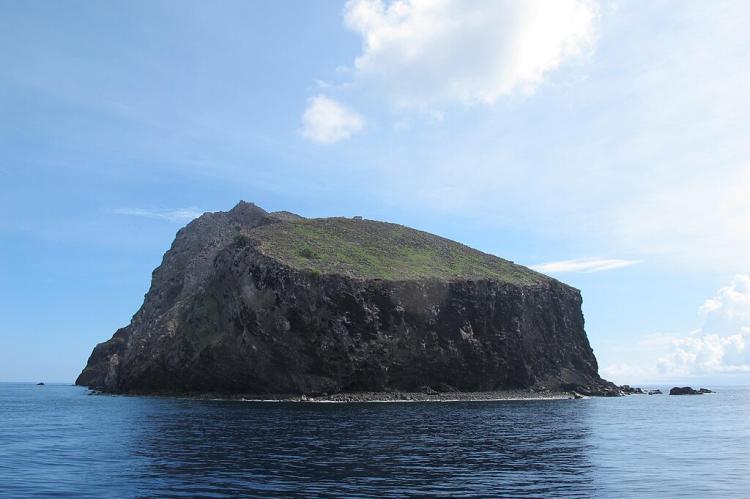The Mysterious Island of Redonda: A Geological and Ecological Gem in the Caribbean
Amidst the turquoise waters of the Caribbean Sea, the tiny island of Redonda is a unique and captivating geological and ecological wonder. Belonging to the nation of Antigua and Barbuda, this remote, uninhabited island is a testament to the remarkable diversity and resilience of life in the region.
An Introduction to Redonda
Amidst the shimmering turquoise waters of the Caribbean Sea, the tiny island of Redonda is a unique and captivating geological and ecological wonder. Belonging to the nation of Antigua and Barbuda, this remote, uninhabited island is a testament to the remarkable diversity and resilience of life in the region.
The island, a mere 1.6 square kilometers (0.6 square miles) in size, is a true anomaly in the Caribbean archipelago. Unlike the lush, tropical islands that dot the region, Redonda is a rugged, volcanic outcrop that rises dramatically from the sea. Its steep, craggy cliffs and barren landscape starkly contrast the surrounding azure waters.
A Geological Masterpiece
The geological history of Redonda is as fascinating as it is complex. Formed by a series of volcanic eruptions millions of years ago, the island is a unique example of a relatively young, uplifted seamount. This submerged mountain has broken through the ocean's surface.
The island's distinctive, wedge-shaped profile and steep, jagged cliffs result from extensive erosion and weathering over time, sculpting the volcanic rock into a dramatic, almost otherworldly landscape. Redonda's geology has also played a significant role in developing its diverse and specialized ecosystem.
A Biodiversity Hotspot
Despite its small size and seemingly inhospitable terrain, Redonda is a genuine biodiversity hotspot, home to a remarkable array of plant and animal life found nowhere else on Earth. The island's isolation and unique environmental conditions have allowed for the evolution of an incredible number of endemic species, many of which are found only on the island or in the immediate surrounding waters.
One of the island's most notable inhabitants is the critically endangered Redonda Parrot, a vibrant green parrot adapted to the harsh, rocky environment. The island also supports a thriving colony of seabirds, including the magnificent Redonda Frigatebird, whose distinctive silhouette can often be seen soaring high above the island's cliffs.
The surrounding waters are equally rich in biodiversity, with a vast array of marine life, including colorful coral reefs, diverse schools of tropical fish, and even the occasional visit from majestic humpback whales.
Threats to Redonda's Delicate Ecosystem
While Redonda's remote and rugged nature has helped preserve its unique ecosystem, the island has faced significant biodiversity challenges over the centuries. One of the primary threats has been the introduction of non-native species, which have devastated the island's endemic flora and fauna.
In the late 19th century, the introduction of goats to the island d had a particularly devastating effect. These voracious grazers quickly decimated the island's fragile vegetation, leading to widespread erosion and the loss of critical habitats for many of the island's endemic species. The Redonda Parrot, in particular, faced the threat of local extinction as its nesting sites and food sources were destroyed.
Furthermore, invasive rats, likely introduced by early human visitors, have also damaged the island's biodiversity. These opportunistic predators have preyed upon the eggs and hatchlings of seabirds and threatened the survival of other small, ground-dwelling species.
In response to these threats, conservation efforts have been undertaken in recent decades to restore the island's delicate ecosystem. Removing goats and implementing rodent control measures have helped mitigate the impacts of these invasive species, allowing the island's native plants and animals to recover slowly.
However, the challenges facing Redonda's biodiversity are ongoing. Climate change, with its associated impacts on weather patterns and sea levels, poses an ever-present threat to the island's fragile habitats and the species that call them home. Vigilant monitoring and proactive conservation measures will ensure the long-term survival of Redonda's unique and irreplaceable natural heritage.
The Allure and Significance of Redonda
Redonda's allure lies in its striking geological features, exceptional biodiversity, and the mysteries and legends that have shrouded the island throughout history. From tales of pirate treasure to stories of eccentric "kings" who claimed sovereignty over the island, Redonda has captured the imagination of explorers, adventurers, and researchers alike.
As a testament to the resilience of life in the Caribbean, Redonda holds immense significance, both as a natural wonder and as a living laboratory for studying island biogeography and evolution. Its preservation is an ecological imperative, ensuring that the secrets and stories of this remarkable island continue to inspire and captivate for generations to come.
